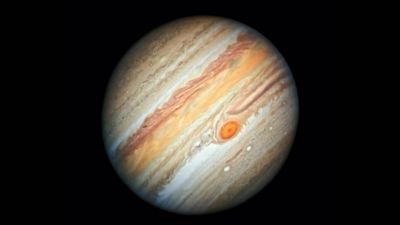Explainer
A rare event: How to view Jupiter in the UK on its closest pass with Earth for 59 years

Jupiter, the largest planet in our solar system, is set to make its closest pass with the Earth in 59 years as we travel between it and the sun on Monday night.
In the time it takes Jupiter to make one complete orbit round the sun, here on Earth, we have travelled 12 times round our closest star.
But like many planets, including our own, orbits around the sun are not in perfect circles and tend to have more of an oval shape. These elliptical orbits mean that planets get closer and further away from the sun at different times.
Currently Jupiter is heading for its perihelion - the point in its orbit when it will be at its closest to the sun and we are travelling between the two of them. When this happens, it's called 'opposition' and it means a planet is opposite the sun. Only the planet's outside Earth's orbit - Mars, Jupiter, Saturn, Uranus and Neptune - can be in opposition.
Why is it a rare event?Jupiter's opposition (which occurs every 13 months) doesn't always coincide with its closest approach to Earth. But in 2022, Jupiter’s opposition to the sun and closest approach to Earth fall on the same day. Something so rare, that it won't occur again until 2129.
How close will we get?At its closest point, Jupiter will be 367 million miles (590 million kilometres) from Earth, but at its further point it can be 570 million miles (965 million kilometres) from our planet.
What does this mean?Jupiter will be visible as a very bright light in the night sky as it rises above the eastern horizon just as the sun sets. It will take all night to track across the celestial dome, before setting in the west at dawn.
Will I be able to see it?As long as the skies stay clear for long enough we should all be able to see it from Earth with the naked eye. Showers are expected overnight but there should be gaps between these. The best chance of it staying dry with long clear spells is through the spine of the country.
If you're lucky enough to have a pair of binoculars, and you can keep it steady, you should be able to view Jupiter's horizontal banding which run round the gases planets circumference as well as three or four of its moons.
With the help of a telescope, around 4-inch or bigger, viewers should be able to see the gas giant’s famous Great Red Spot. Using green to blue range filters will help to enhance the visibility of this and make an easier viewing experience.
A little bit of TriviaStars twinkle in the nights sky as they emit light, unlike planets which reflect it. If Jupiter was larger and was hot enough inside to spark a thermonuclear fusion reaction it would shine bright like a star.
This would mean that on the day of the opposition on September 26, 2022, Earth would be illuminated on both sides. Meaning one side would be illuminated by the sun and the other by Jupiter and there would be no night at all.